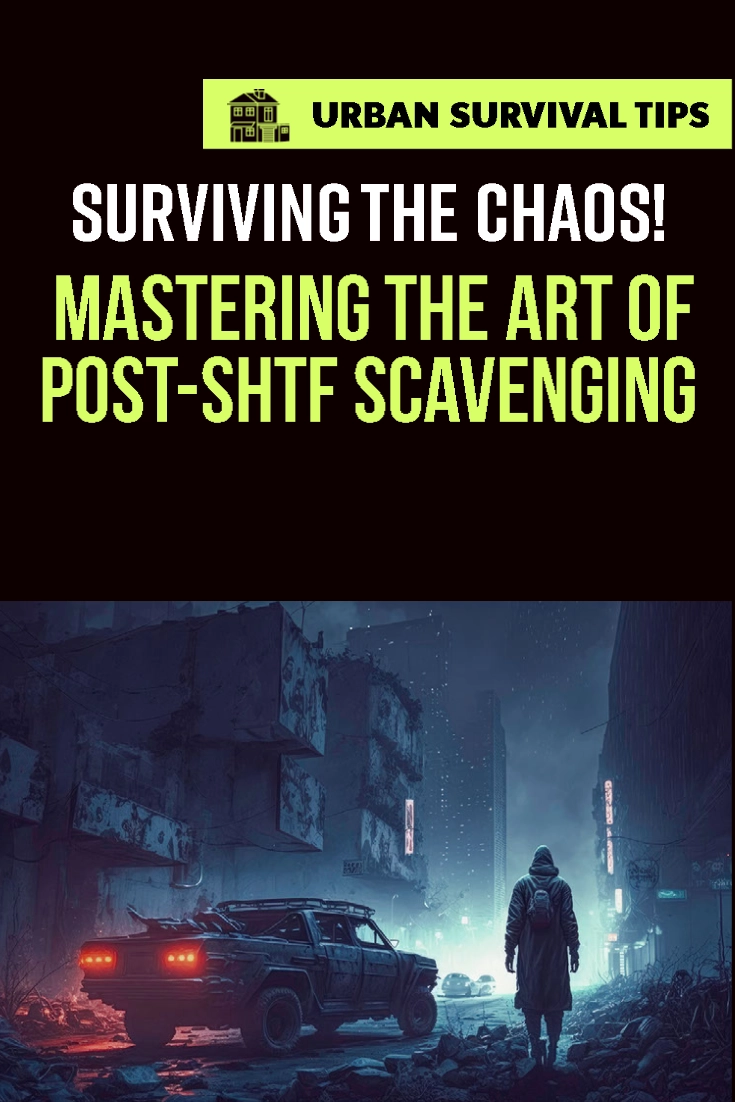
Introduction: In a post-SHTF (Shit Hits The Fan) scenario, the ability to scavenge and procure essential resources can be crucial for survival. Scavenging requires resourcefulness, adaptability, and careful planning. This article presents effective strategies and guidelines to maximize your chances of successful scavenging in a post-apocalyptic world.
Want to save this post for later? Click Here to Pin It On Pinterest!
1. Assessing Scavenging Opportunities: After a major disaster, urban and suburban areas are likely to have the most scavenging opportunities due to the concentration of resources. Start by evaluating the surroundings, and identifying potential sources of essential supplies such as food, water, medicine, and tools.
2. Prioritize Essential Resources: In a survival situation, it is important to prioritize the acquisition of essential resources. Focus on securing items like non-perishable food, clean water, medical supplies, and tools that can aid in self-defense and utility.
3. Safety First: Before entering any location for scavenging, prioritize personal safety. Be cautious of potential hazards, unstable structures, and other dangers. Wear appropriate protective gear, such as gloves, boots, and a mask, to minimize exposure to hazardous substances or pathogens.
4. Formulate a Scavenging Plan: Develop a comprehensive plan before venturing out to scavenge. Determine the areas to explore, create a checklist of required resources, and set a specific timeline for each location. Having a plan will help you stay organized and increase efficiency during the scavenging process.
5. Travel Light and Quietly: During scavenging missions, it is essential to travel light. Carry only necessary equipment and tools to avoid unnecessary burdens. Additionally, maintain a low profile and minimize noise to avoid drawing attention from potential threats.
6. Adaptability and Resourcefulness: Scavenging successfully requires adaptability and resourcefulness. Be open to finding alternative sources of essential items when the usual ones are depleted. Consider creative solutions and make the most of the available resources.
7. Bartering and Trading: In a post-SHTF world, a barter and trade system may emerge. Connect with other survivors and establish relationships based on mutual aid and trade. Trading surplus items or specialized skills can help you acquire resources you lack and build a supportive network.
8. Learn Basic Repair and Maintenance Skills: Being able to repair and maintain essential items can significantly extend their usefulness. Acquire basic skills in repairing tools, clothing, and equipment. This knowledge will enhance your self-sufficiency and resourcefulness in a resource-scarce environment.
9. Develop Stealth and Evasion Techniques: In potentially hostile situations, it is important to develop stealth and evasion techniques. Learn how to move quietly, avoid detection, and assess risks to minimize confrontations. Keeping a low profile can help you scavenge without attracting unwanted attention.
10. Preserve and Protect Resources: Once you acquire essential resources, take measures to preserve and protect them. Proper storage, rationing, and safeguarding against environmental factors will ensure that your scavenged supplies last longer and sustain you through difficult times.
Conclusion: Scavenging for resources in a post-SHTF world requires careful planning, adaptability, and a focus on personal safety. By assessing opportunities, prioritizing essential resources, and employing strategic techniques, you can maximize your chances of successful scavenging and enhance your chances of survival in a challenging environment. Remember to stay vigilant, resourceful, and develop relationships with fellow survivors to improve your overall resilience.